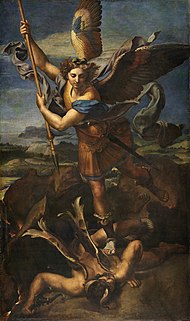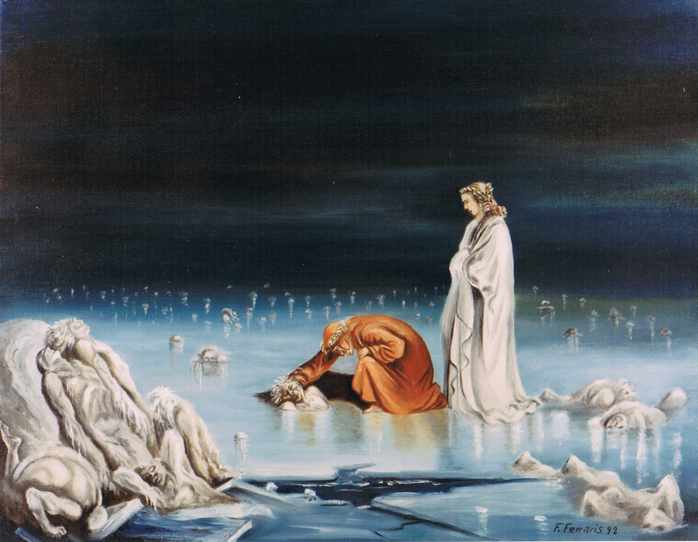By Faryn Thomas, Jennifer Morse, Joseph Marques, and Robert Carhuayo
God’s divine goodness and beauty are often mentioned in the same breath. But there are other things that are somewhat surprisingly portrayed as beautiful, for example, Sodom. “The people’s settlements there were beautiful — the men without honor, hateful to their creator” (137) The Sodomites are obviously without any sort of goodness or grace, and yet their city still retains its beauty. Later, of course, the Lord razes the city, destroying any beauty that existed there. This narrative of losing internal grace, followed by losing external beauty is also mirrored by the story of the garden. If we examine a description of Eve:
“Then the brightest of ladies walked up to Adam, the most beautiful of women who should ever come into the world — because she was the handiwork of the king of heaven — although secretly she had been undone by then, misled by lies, so that they would become hateful to Got by the plot of the hostile one…” (49)

Then we can see this pattern emerge. Humanity was beautiful, created by God’s divine craftsmanship, but the inside is undone and spoiled. Following this of course, humanity loses much of that divine beauty, as future generations drift ever further away from God’s grace. We can even see this mirrored in the archetypal example of Satan and the other fallen angels. Satan is angelic in appearance even after opposing God, it is only after God chooses to strike the hubristic angels down to Hell that they are “misshaped” (25) by his hand. The fall from grace precedes the fall from beauty. In this way, it seems that beauty is simply a divine gift that the Lord bestows upon his favored creations, rather than anything pertaining to the internal divine truth or grace of the subject.
Another question it might be interesting to ask, is Hell beautiful? It is certainly described as incredibly extreme, with great flames and cold alternating across its barren landscape. But at the same time, it IS one of God’s creations, unsullied by evil. While one would clearly not like to reside there, it isn’t described negatively as an aesthetic object. In fact, it is talked about in almost a reverent tone as it is a cosmically powerful place, much like Heaven itself.

Also, what is the place of truth and reason in Genesis and how do they stand in relation to beauty? There is a very telling string of logic, when Adam confronts the serpent. Adam’s reasoning starts from the word of God, “I know what he himself commanded me” (43). Then, he relies on divine beauty “You are not like any of his angels who I saw before” (43). Finally, his argument rests ultimately on faith, “I have a firm belief above in almighty God” (43). The first two arguments are based on Adam using his senses to observe God’s divine grace (as God’s word and beautiful creations are divine), without doing much of anything in the way of interpretation. The first and last arguments are also centered around devout, blind obedience to the Lord, without any attempt to adjudicate the meaning of his words or existence. Taken together, along with the fact that Satan is described as “mighty in his intellect” (21), it would seem to indicate that reason itself is suspect, and that once should instead focus on divine grace and beauty to guide their lives.
Anlezark, Daniel, ed. and trans. Old Testament Narratives. Dumbarton Oaks Medieval Library. Cambridge, MA: Harvard University Press, 2011.
Images:
- “The destruction of Sodom and Gomorrah” by Jules-Joseph-Augustin Laurens. DEA / G. DAGLI ORTI / Getty Images
- Paradise with the Fall of Man by Jan Brueghel the Elder and Peter Paul Rubins, 1615
- “St. Michael Vanquishing Satan” by Raphael, 1518
- Canto XXXII, colorized by Franco Ferraris

This is an insightfully posed dilemma. I do wonder if beauty perceived by the senses opens one up to the sin of what Augustine would call “concupiscentia oculorum,” or the lust of the eyes. Then what place is there for divine forms of beauty and how are they to be appreciated by human beings? Perhaps through faith as distinguished from perceptivity, as you suggest, but then what of the distinct visuality of Prudentius’s Psychomachia and its accompanying illustrations, or for that matter the illustrations in the Junius Manuscript or any other aesthetic objects used for religious devotion? “Aesthetic” is the key word here, since its root is the Greek “aisthesthai” (to perceive). Thank you for this thought-provoking post!